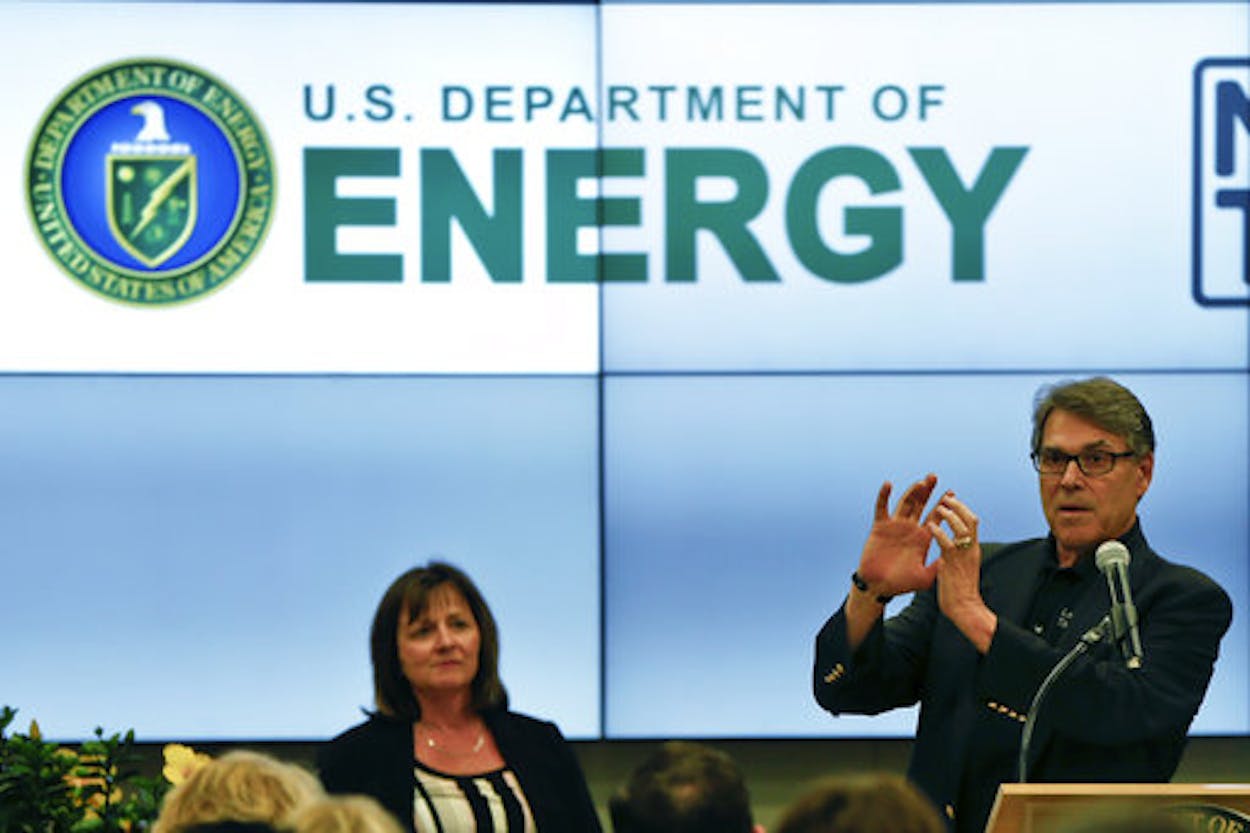It has been quite a journey since the dark days of energy shortages in the seventies to the energy renaissance of today. The scope of the Department of Energy (DOE) is vast, larger than could be fully covered here. I’ll just focus on the part of DOE I know best, its work with our nation’s electric grids.
There is no way to overstate the importance of electricity to our modern lifestyle, and for almost all of us, that electricity comes from interconnected electric grids. But the simplicity of the wall outlet masks the complexity of what lies behind it—essentially one of the world’s largest, most complex machines. Selected in 2000 by the U.S. National Academy of Engineering as the top engineering technology of the twentieth century, electrification has changed the world. And much of the expertise needed to design, build, and operate these increasingly complex grids is due in no small part to research and training provided by the DOE.
About 40 percent of the energy we use comes to us as electricity, a percentage that could grow substantially with the further electrification of transportation. In the U.S. this is provided by three large grids, with Texas as the only state to be in all three. Most Texans receive their electricity from the Electric Reliability Council of Texas (ERCOT), but parts of East and North Texas are in the Eastern Interconnect, while far West Texas is in the Western Interconnect. Such large grids usually help to provide electricity with higher reliability and lower costs. But they are becoming increasingly complex, particularly as we augment the traditional generation sources of coal, natural gas, nuclear, and hydro with less easily controlled and more intermittent sources, such as wind and solar photovoltaic (PV). Results from DOE research are embedded in much of the technology needed to run these grids, and the DOE funded the initial training of many of the engineers who plan and operate our grids. An example includes our recent surge in wind energy generation, with Texas leading the way, providing about 25 percent of the total capacity, so much that at times more than 45 percent of the electricity used in ERCOT comes from wind.
Going forward, the DOE needs to continue this basic research emphasis, a conclusion supported by two recent U.S. National Academies reports, one from 2016 looking at the needs for more foundational electric grid research and one from 2017 looking at electric grid resiliency. Different parts of our country have different issues, with some, such as Texas, having the challenges of a growing high voltage electric transmission system that is needed to move a large amount of more remote wind generation to our urban population centers. Others face potential threats caused by the loss of too much of the large, baseload generators that are needed to help stabilize the grid.
Yet throughout the country there is also a need for more research on how to best address emerging threats to our electric grid. One example is cyber security, an area in which the DOE has been supporting collaborative university, national lab and industry research. A second is the threat due to geomagnetic disturbances (GMDs), in which solar storms have the potential to cause large-scale blackouts. With GMDs, DOE-supported research, including some involving Texas A&M researchers, has resulted in the development of new commercial software that utilities throughout the country are now using to develop plans to reduce their vulnerability to GMDs. The DOE’s Advanced Research Projects Agency (ARPA-E) has also played a key role in the last few years, including supporting research at Texas A&M associated with the development of large-scale, realistic, validated and open access power system network models.
In looking further forward, one thing we know is the future is always uncertain. It is unlikely to be just some extrapolated version of the present—we need to, as the saying goes, expect the unexpected. The DOE should have a strong focus on the foundational research into the electric grid that can apply to a wide variety of future scenarios. Electric grid testbeds that include detailed electric grid simulations allow for the consideration of different scenarios and thorough testing of equipment in realistic conditions. Finally, there is a need for continued investment in the education of the next generation of men and women who help guide us to what I think could be a very bright energy future.
Thomas J. Overbye is TEES Distinguished Research Professor at Texas A&M University. He is the developer of PowerWorld Simulator, a software package for power system analysis and visualization, and a member of the U.S. National Academy of Engineering.
- More About:
- Energy






